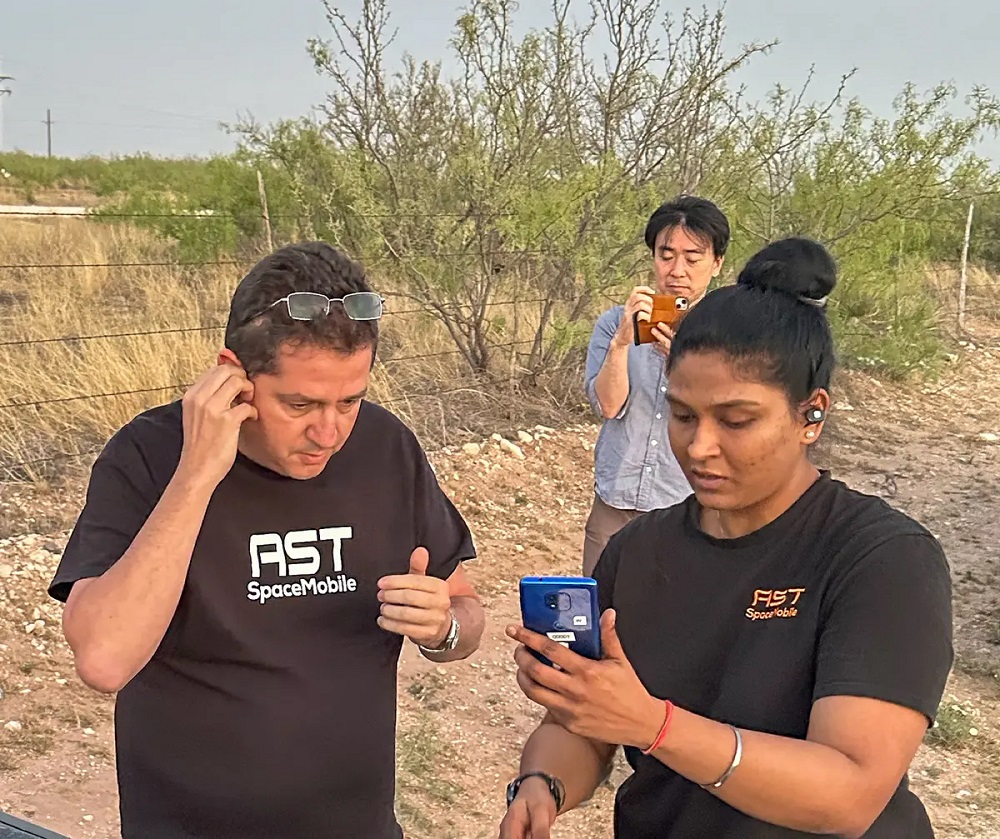TAMPA, Fla. — AST SpaceMobile’s shares closed up more than 68% after announcing a revenue-sharing deal with AT&T, which plans to use its proposed direct-to-device satellites to keep smartphones connected in cellular dead zones.
The shares closed at $4.03 May 16, the day after AST SpaceMobile disclosed a definitive agreement with the telco extending until 2030 as part of earnings results.
AST SpaceMobile also recorded $500,000 in revenue for the three months to the end of March, marking the first commercial revenue from the constellation following a government contract for its BlueWalker-3 prototype that was launched two years ago.
The agreement with AT&T upgrades a Memorandum of Understanding between the companies, which have been working together for six years, establishing terms for the telco to roll out satellite connectivity in the United States after AST SpaceMobile deploys its first commercial satellites this year.
AST SpaceMobile executives declined to provide details about the arrangement in a May 15 earnings call with analysts.
The agreement did not come with additional prepayment revenue on top of the $20 million AT&T agreed to make in January, AST SpaceMobile chief strategy officer Scott Wisniewski said.
Abel Avellan, AST SpaceMobile’s CEO, said its first five commercial satellites remain on track to be delivered to Cape Canaveral in July or August for a SpaceX Falcon 9 launch to low Earth orbit, after the company’s most recent setback pushed the launch out of the second quarter of 2024.
Satellite production issues and cost overruns helped send the company’s shares on a downward trend not long after closing at $11.81 on their first day of trading on NASDAQ in 2021, following a merger with a special purpose acquisition company (SPAC).
“With these first five satellites, we will have the ability to offer U.S. nationwide, noncontinuous service with over 5,600 individual cells using premium low-band spectrum,” Avellan said.
AT&T would provide these radio waves for AST SpaceMobile in the United States, although — along with direct-to-smartphone rivals SpaceX and Lynk Global — they must secure regulatory approval before providing commercial services there.
Avellan said initial commercial satellites would be capable of enabling 5G voice and broadband services when overhead, pointing to successful tests with BlueWalker 3 that achieved 14 megabits per second download rates last year.
Coverage with five satellites would span up to 59 degrees latitude for both northern and southern hemispheres, covering Canada to Argentina and from South Africa to Europe and Japan.
“There’s revenue potential that’s real on these first five satellites,” Wisniewski said, but “it is not our focus … we believe that the big opportunity is as we scale the system.”
Government opportunity
Avellan said the company’s government contract represents a framework that can be used for future government agreements.
“Simultaneously, we’re continuing talks with our first government customers,” he said. “negotiating additional services we could potentially provide to expand our existing relationships.
“While the core focus of our strategy is consumer cellular broadband, we do think that the government opportunity is a natural extension of our capabilities, and can be very meaningful to our company over time.”
A need for scale
AST SpaceMobile has said it needs 45-60 satellites for continuous services in the United States, and 90 satellites for the full 5G network it envisages.
However, production setbacks have weighed on the company’s cash reserves since raising $417 million in 2021 by merging with a SPAC, a shell company that lists on a stock exchange with capital from public investors searching for an investment opportunity.
AST SpaceMobile has since raised more funds, including $155 million from a strategic investment in January from AT&T, Vodafone, Google and other investors, but needs more capital to expand the constellation.
In April, the operator said it received three non-binding letters of interest for export credit agency funding to help deploy up to 45 satellites by the end of 2026.
As of March 31, AST SpaceMobile said it had $212.4 million in cash reserves, and $51.5 million available under a debt facility.
The company recorded $31.1 million in adjusted operating expenses for the first quarter of 2024. Capital expenditure needs are expected to range between $25 million and $40 million during the remaining quarterly periods this year.
AT&T’s shares closed down 0.17% to $17.30 after market close May 16.
